25 Incredible Asian Fried Dough Foods You Need to Taste
Asian fried dough represents a delectable culinary journey through crispy, golden-brown delights that tantalize taste buds across diverse cultures.
These beloved street foods showcase incredible versatility and deep-rooted traditional techniques passed down through generations.
Crisp exterior and soft interior create an irresistible textural contrast that makes these treats universally appealing.
Regional variations highlight unique ingredients, cooking methods, and cultural significance embedded in each delectable morsel.
Skilled artisans transform simple flour, water, and occasional seasonings into magical crisp creations that connect communities through shared gastronomic experiences.
Culinary traditions merge with innovative techniques, resulting in mouth-watering snacks that transcend geographical boundaries.
Rich aromas and golden-brown surfaces invite you to savor complex flavor profiles that tell stories of heritage and innovation.
Buckle up for a delightful exploration of 25 remarkable Asian fried dough sensations that will spark your culinary curiosity:
Famous Asian Fried Dough Foods for All Appetites
Asian street food culture is defined by crispy, golden fried dough. Savory or sweet, these snacks offer comfort and a burst of flavor in every bite.
Karipap
Karipap are savory pastry pockets packed with spicy curry filling that originated in Malaysia's multicultural culinary landscape.
Malaysian street vendors and home cooks perfected these handheld snacks by combining flaky pastry with rich, aromatic curry stuffings.
Small deep-fried or baked turnovers typically feature chicken and potato curry as traditional fillings, though modern variations include tuna, sardines, and beef rendang.
Regional influences from Sumatra and Borneo shaped the pastry's development, helping it spread across Southeast Asia.
Singaporean and Thai food cultures quickly embraced karipap as a popular breakfast and afternoon snack.
Simple preparation methods and bold flavors contributed to its widespread popularity beyond Malaysia's borders.
Crispy exteriors and warm, spicy interiors make karipap an irresistible street food.
Compact size and portable nature ensure these pastry pockets remain a convenient, delicious treat for hungry locals and travelers.
Pacanga Boregi
Pacanga boregi represents a crispy Turkish pastry featuring salted pastirma beef and kasar cheese stuffed inside thin yufka dough.
Sephardic Jewish culinary traditions from Istanbul inspired this popular Anatolian appetizer.
Rectangular pastry sheets get filled with aged dried beef and melted cheese before being expertly fried to golden perfection.
Peppers and tomatoes sometimes enhance the savory filling for extra flavor complexity.
Traditional preparation methods ensure a crunchy exterior with a rich, meaty interior.
Istanbul restaurants and home kitchens serve this borek hot as a starter or quick snack.
Regional variations showcase slight differences in ingredient combinations and preparation techniques.
Bhatura
Bhatura are puffy, deep-fried North Indian breads known for their exceptional airiness and golden-brown exterior achieved through strategic fermentation.
Wheat flour, yogurt, oil, and baking powder combine to create its signature light texture during a one-hour resting process.
Street vendors and restaurants across North India serve bhatura alongside spicy chickpea curry in the famous chole bhatura combination.
Regional variations include stuffing the bread with paneer or sprinkling it with Indian masalas.
Skilled bakers manipulate dough consistency to ensure maximum inflation during frying.
Kulcha, a close relative, shares similar ingredients but differs in cooking method by baking or pan-cooking instead of deep-frying.
Bhatura's versatility makes it a popular breakfast and street food option.
Diners enjoy the crispy exterior and soft interior that characterize this beloved bread.
Znoud El Sit
Znoud el sit are crispy Middle Eastern pastry rolls stuffed with ashta cream and fried to golden perfection before being drenched in fragrant sugar syrup.
Lebanese and Syrian dessert traditions celebrate these sweet treats during Ramadan as a beloved Iftar delicacy.
Phyllo dough creates delicate layers that wrap around rich clotted cream filling, forming elegant elongated shapes resembling ladys upper arms.
Orange blossom and rose water infuse the syrup with intense aromatics that complement the pastry's crunch.
Ground pistachios provide a nutty garnish that adds textural contrast to the sweet rolls.
Regional variations exist across Middle Eastern countries, including Lebanon, Syria, and Iraq.
Families and restaurants prepare these pastries as special occasion desserts that showcase culinary craftsmanship.
Lokma
Lokma fritters are sweet deep-fried pastry balls soaked in syrup that originated in ancient Mediterranean cultures.
Greek records show these sugar-packed treats were awarded to Olympic champions as celebratory tokens.
Mediterranean street vendors and bakeries continue the centuries-old tradition of preparing these irresistible desserts.
Greeks call them loukoumades while Turks name them lokma, with slight recipe variations across regions.
Traditional preparation involves mixing flour, sugar, yeast, and salt into a soft dough.
Skilled bakers carefully drop small dough portions into hot oil until golden brown.
After frying, bakers generously drench the crispy balls in honey or sugar syrup.
Historians debate the exact cultural origins, with evidence pointing to Greek, Turkish, and Arabic culinary traditions.
Pa Thong Ko
Pa thong ko represents Thailand's crispy, light-textured street food adaptation of Chinese youtiao crullers.
Street vendors across Thailand prepare these deep-fried pastries by mixing flour, yeast, baking ammonia, alum powder, water, salt, sugar, and baking powder into a stretchy dough.
Bakers carefully connect two dough strips before submerging them in hot oil, creating puffy golden treats with a satisfyingly crisp exterior.
Skilled makers traditionally shape the crullers in classic long forms, though modern variations now include playful designs like dinosaurs and dragons.
Young and old enjoy pa thong ko as a quick breakfast or snack, often paired with sweetened condensed milk or chocolate dips.
Street markets and morning food stalls frequently feature these addictive golden treats.
Regional Thai provinces each add subtle twists to their preparation methods.
Tourists and locals alike consider pa thong ko a beloved street food staple throughout Thailand.
Kadayf Dolmas
Kadayf dolmas are a decadent Turkish dessert from Erzurum featuring thin kadayf dough wrapped around rich nut fillings.
Pistachios or walnuts create a crunchy center inside delicate dough rolls carefully coated in beaten eggs and fried to golden perfection.
Small elongated rolls emerge crispy and light after frying, then get drenched in a sweet lemon-flavored sugar syrup.
Ground nuts sprinkled on top add extra texture and nutty complexity to this indulgent treat.
Traditional preparation involves carefully flattening the dough and stuffing it with chopped nuts before rolling.
Kaymak, a thick clotted cream, sometimes serves as an optional luxurious garnish.
Regional cooks take pride in their precise technique of creating these crispy-sweet bites.
Each kadayf dolmas offers a perfect balance of crunch, sweetness, and nutty richness that makes it an irresistible dessert.
Qottab
Qottab are traditional Iranian pastries featuring delicate wheat dough encasing rich almond or walnut fillings and skillfully deep-fried to golden perfection.
Originating in Yazd, these small crescent-shaped sweets have become a beloved national dessert across Iran.
Warm spices like cinnamon, cardamom, rose water, and orange blossom infuse each bite with complex flavor profiles.
Generously dusted with powdered sugar, qottab offer a delicate crunch and sweet, nutty interior.
Their light texture and aromatic spices make them a popular treat during celebrations and social gatherings.
Iranian families often prepare these pastries for special occasions, sharing them as a symbol of hospitality and culinary tradition.
Carefully crafted and meticulously seasoned, qottab represent a cherished part of Iran's rich gastronomic heritage.
Small yet significant, these pastries connect generations through their timeless recipe and cultural importance.
Gosh-E Fil
Gosh-e fil are crispy Iranian and Afghan pastries shaped like elephant ears, crafted from a simple dough of flour, sugar, eggs, and milk.
Bakers quickly fry the thinly rolled dough for mere seconds, creating a light and crunchy texture that crackles with each bite.
Sweet and aromatic spices elevate these traditional treats, with cooks generously dusting them in powdered sugar and fragrant cardamom.
Crushed pistachios add a nutty crunch to the delicate pastry, while optional rose petals provide a subtle floral note.
Served during celebrations and special occasions, these sweets connect generations through their timeless recipe.
Street vendors and home kitchens alike prepare gosh-e fil as a beloved dessert.
Generations of families have passed down this recipe, maintaining its cultural significance.
Iranian and Afghan communities celebrate their heritage through these simple yet elegant pastries.
Curry Beef Triangle (Ga Li Su)
Curry beef triangles are crispy, golden-brown pastries from Hong Kong that pack a flavorful punch with their savory curry beef filling.
Street vendors and bakeries across Hong Kong serve these hand-held snacks as popular quick bites.
Skilled cooks create the triangles by mixing ground beef with onions, garlic, curry powder, and peas into a rich mixture.
Thin dough circles are carefully filled and folded into perfect triangular shapes before sealing with beaten eggs.
High-heat frying transforms the pastry into a crunchy exterior with a juicy, spiced interior.
Each triangle offers a perfect balance of textures and complex curry flavors.
Cantonese culinary traditions inspire these portable snacks that can be enjoyed as appetizers or light meals.
Restaurants and home kitchens throughout Hong Kong continue to celebrate this beloved street food.
Korean Twisted Donuts (Kkwabaegi)
Kkwabaegi are classic South Korean twisted donuts featuring a golden, crispy exterior and soft, pillowy interior that dance with sweet cinnamon flavor.
Street vendors and bakeries across Korea craft these iconic treats by mixing flour, butter, sugar, milk, eggs, yeast, and salt into a silky dough.
Bakers carefully knead the mixture, allowing it to rise twice for maximum fluffiness and texture.
Gentle twisting creates the signature braided shape before frying to a perfect golden brown.
Warm cinnamon sugar coating adds an extra layer of irresistible sweetness to these beloved street snacks.
Koreans enjoy kkwabaegi as quick breakfast treats or afternoon pick-me-ups.
Street markets and home kitchens frequently feature these comforting donuts.
Generations have passed down this simple yet delicious recipe, making kkwabaegi a cherished national snack.
Khaja
Khaja is a crispy, golden-brown North Indian dessert crafted from flour, sugar, and ghee, deep-fried to perfection and often celebrated at wedding celebrations.
Regional variations showcase unique characteristics, with Silao and Rajgir versions known for their puffy texture and Andhra Pradesh coastal styles featuring a dry exterior and sugar syrup center.
Wedding guests eagerly anticipate this sweet treat, which comes in multiple styles across different Indian regions.
Skilled bakers create these desserts by carefully mixing dough ingredients and frying them until they achieve a rich golden color.
Ghee plays a crucial role in developing the khaja's distinctive flavor and crisp texture.
Sugar syrup can be added after frying, enhancing the dessert's sweetness and moisture.
Generations have passed down traditional khaja recipes, maintaining their cultural significance.
Some regions customize their khaja with unique fillings or additional spices, making each version a special culinary experience.
Panada
Panada are crispy Indonesian pastries inspired by Spanish empanadas, featuring a unique deep-fried crescent shape filled with skipjack tuna, onions, coconut milk, and chili peppers.
Portuguese traders likely introduced this snack to Indonesia during the 16th century, transforming traditional empanada recipes with local ingredients.
Indonesian bakers use leavened dough to create these golden-brown treats, which differ from their Latin American counterparts.
Regional variations include additional spices and alternative protein fillings like chicken or seafood.
Panada serve as a popular street food and quick meal option across Indonesian islands.
Coconut milk adds richness and depth to the savory fish mixture.
Chili peppers provide a distinctive spicy kick to the pastry's interior.
Khuushuur
Khuushuur are deep-fried Mongolian meat pastries bursting with robust flavors from ground mutton, beef, or a blend of savory ingredients wrapped in crispy, golden-brown dough.
Nomadic herders originally crafted these crescent-shaped delicacies as portable, protein-rich meals during long journeys across Mongolia's rugged landscapes.
Traditional recipes feature mutton and onions as primary filling components, though modern variations incorporate beef, garlic, and occasional vegetable additions.
Mountain regions and rural communities have long embraced khuushuur as a staple comfort food.
Families often prepare these pastries during special gatherings and festivals, symbolizing warmth and hospitality.
Mongolian street vendors and home cooks typically hand-shape each pastry with care and precision.
Restaurants throughout Mongolia serve khuushuur as a popular appetizer or main course.
Regional differences in preparation and ingredients reflect the diverse culinary traditions across Mongolia's expansive territories.
Chinese Crullers (Youtiao)
Youtiao are golden-brown Chinese breadsticks deep-fried in connected pairs, symbolizing a powerful historical protest against political corruption during the Song Dynasty.
Chinese breakfast tables feature these crispy-outside, tender-inside fried dough sticks that originated from a dramatic culinary rebellion.
Legend describes how a cook crafted the breadsticks resembling Qin Gui and his wife after their treacherous execution of the popular general Yue Fei.
Nicknamed "deep-fried ghosts" (you zha gui), these savory snacks carry a provocative backstory of resistance through culinary art.
Street vendors and home kitchens across China continue this centuries-old tradition of making youtiao.
Modern consumers enjoy them alongside warm soy milk or congee for a classic morning meal.
Restaurants and food stalls throughout Chinese regions serve these iconic breadsticks.
Youtiao remain a beloved breakfast staple with rich cultural significance embedded in every crispy bite.
Sufganiyah
Sufganiyot are deep-fried jelly-filled doughnuts that symbolize Jewish cultural resilience and holiday celebration.
German Jewish immigrants brought these pastries to Israel after escaping Nazi persecution in the early 20th century.
Traditional versions feature raspberry or strawberry jam centers nestled inside soft, golden-brown dough.
Israeli bakeries now craft elaborate sufganiyot with gourmet fillings like chocolate, caramel, and unique flavor combinations.
Powdered sugar typically dusts the exterior, adding a delicate sweet finish.
Hanukkah celebrations prominently feature these treats as a symbolic food representing oil's miraculous endurance.
Home bakers and professional pastry makers compete to create the most innovative sufganiyot designs.
Religious and cultural significance elevates these doughnuts beyond simple desserts during the eight-day festival.
Dal Puri
Dal puri are spicy Indian flatbreads bursting with aromatic lentil fillings, deep-fried to golden perfection.
North Indian cuisine celebrates this crispy bread's unique preparation method of kneading dough with ground mung dal lentils.
Skilled bakers blend plain flour, water, salt, and oil to create the base dough.
Signature spices like ginger, green chili, cumin, fennel seed powder, and mango powder elevate the bread's complex flavor profile.
Mashed lentils mixed with additional seasonings such as garam masala, carom seeds, and turmeric create a rich inner layer.
Variations in spice levels range from mild to intensely hot across different regional recipes.
Dal puri traditionally accompanies main dishes and appears during festive celebrations.
Breakfast tables and family gatherings frequently feature these flavorful, crisp breads as a beloved staple.
Hanm Gobegi
Hanm gobegi are delicate Turkish pastry spheres shaped like a woman's navel, featuring a distinctive center dimple created by pressing the choux dough before deep-frying.
Sweet sugar syrup thoroughly saturates the golden-brown pastry after cooking, giving these treats an irresistible glossy appearance and sugary flavor.
Originating in traditional Turkish cuisine, these pastries showcase a precise technique of creating perfectly round balls with a central indentation.
Street vendors and home bakers carefully craft each pastry by hand, ensuring uniform shape and consistent texture.
Typically served during celebrations and family gatherings, hanm gobegi represent a beloved dessert that connects generations through shared culinary tradition.
Hot oil transforms the delicate dough into crispy exterior shells while maintaining a soft interior.
Sugar syrup adds a glossy finish and intense sweetness to each bite.
Careful preparation makes these pastries a cherished sweet in Turkish dessert culture.
Awameh
Awameh are light, golden-brown Syrian pastry spheres that float gracefully in hot oil before being drenched in sweet syrup.
Originating from Middle Eastern culinary traditions, these small dough balls transform into crispy, delicate treats when fried to a perfect golden hue.
Honey, sugar syrup, or cinnamon syrup generously coats each morsel, creating a rich and indulgent dessert.
Arabic speakers named the dish "floater" because of how the dough balls elegantly drift during frying.
Sesame seeds sometimes add a subtle crunch and nutty flavor to the exterior.
Syrian households often prepare awameh during festive occasions and family gatherings.
Traditional recipes pass through generations, maintaining the classic preparation methods.
Street vendors and home kitchens alike celebrate this simple yet irresistible sweet treat.
Kuih Keria
Kuih keria are Malaysian sweet potato doughnuts distinguished by their unique dense texture and handcrafted rings made without leavening agents.
Street vendors and home cooks across Malaysia transform sweet potatoes into soft dough by steaming and mashing them before mixing with flour.
Circular shapes get carefully formed by hand, creating signature ring designs that differ from traditional puffy doughnuts.
Deep frying gives these treats a crispy golden exterior while maintaining a hearty interior.
Sugar coating adds a delightful caramelized crunch to each bite.
Malaysian families often prepare kuih keria during festivals and special gatherings.
Regional variations exist throughout different Malaysian states, with some adding subtle spices or using alternative flour mixtures.
Street markets frequently showcase these affordable and traditional snacks as popular quick treats.
Binangkal
Binangkal are golden-brown deep-fried Filipino doughnuts with a distinctive sesame seed coating that delivers a unique crunch and nutty flavor profile.
Originating from Visayas and Mindanao regions, these round snacks feature a simple dough made from flour, milk, sugar, baking powder, and baking soda.
Sesame seeds are generously sprinkled on the surface before frying, creating a crispy exterior that contrasts with the soft interior.
Street vendors and home cooks often prepare these treats as quick breakfast or merienda options.
Binangkal can be enjoyed plain or with a light dusting of powdered sugar for added sweetness.
Small and bite-sized, these doughnuts provide a satisfying texture and rich flavor.
Traditionally served warm, they pair perfectly with coffee or hot tea.
Simple ingredients and quick preparation make binangkal a beloved Filipino street food snack.
Shakoy
Shakoy doughnuts are Filipino twisted pastries that showcase a distinctive braided shape and crispy golden exterior achieved through deep-frying.
Street vendors and home bakers across the Philippines craft these simple yet delicious treats using basic ingredients like flour, salt, sugar, and yeast.
Bakers carefully stretch and twist dough into long, rope-like forms before generously coating them with granulated sugar.
Each pastry delivers a satisfying crunch with a sweet, airy interior that makes them irresistible to locals and visitors.
Regional variations exist throughout different Philippine islands, with some adding subtle flavor modifications.
Traditional preparation methods involve hand-twisting techniques passed through generations.
Bakeries and street stalls often sell these affordable snacks as quick breakfast or merienda (afternoon snack) options.
Regional communities continue to preserve this beloved street food tradition with pride and skill.
Pie Tee
Pie tee embodies Peranakan cuisine's ingenious street food art, transforming simple ingredients into a crispy, bite-sized delicacy.
Singapore and Malaysia cherish this unique appetizer featuring delicate pastry shells crafted through precise deep-frying techniques.
Skilled cooks create thin, golden-brown cups using special molds dipped in flour batter and quickly fried until crisp.
Inside these fragile shells, cooks layer julienned vegetables like bamboo shoots, turnips, and carrots for a fresh, crunchy texture.
Shrimp add a sweet seafood element, while chili sauce provides a spicy kick.
Chopped coriander leaves and thin omelet strips garnish the top, adding color and complexity.
Each pie tee serves as a miniature flavor explosion, representing generations of culinary creativity.
Peranakan families traditionally prepare these elegant appetizers during festive gatherings and special celebrations.
Athirasa
Athirasa represents a beloved Sri Lankan sweet delicacy crafted from rice flour, roasted rice, coconut treacle, coconut oil, and cardamom.
Sri Lankan households transform these simple ingredients into small circular cakes through a careful deep-frying process.
Festive celebrations often feature athirasa as a centerpiece dessert alongside traditional sweets like kokis and kavum.
Families carefully mix the ingredients to create a stiff paste before shaping the mixture into perfect rounds.
Each cake requires precise temperature control during frying to achieve a golden-brown exterior and soft interior.
Generations have passed down this recipe, maintaining its authentic preparation methods.
Regional variations might slightly adjust ingredient proportions or cooking techniques.
Coconut treacle provides a distinctive sweetness that distinguishes athirasa from other South Asian desserts.
Gulha
Gulha represents Maldivian culinary heritage as a savory deep-fried pastry ball packed with traditional flavors.
Smoked fish like tuna or Maldive fish gets blended with desiccated coconut and finely chopped onions inside a crispy golden exterior.
Local street vendors and small cafes called hotaa frequently sell these compact snacks across Maldivian islands.
Fishermen and home cooks have passed down this recipe through generations, maintaining its authentic preparation method.
Small spherical pastries emerge from hot oil with a perfectly crisp shell and rich, smoky interior.
These bite-sized treats serve as popular street food and casual restaurant offerings throughout the archipelago.
Gulha connects Maldivians to their maritime culinary traditions with every crisp, flavorful morsel.
What Types of Flours and Ingredients Are Commonly Used in Asian Fried Dough Foods?
Asian fried dough foods feature a variety of flours and ingredients that vary by region and dish, but some common staples include:
These flours and ingredients allow Asian fried dough foods to achieve a wide range of textures - from airy and crisp to chewy and tender - making them beloved across the continent.

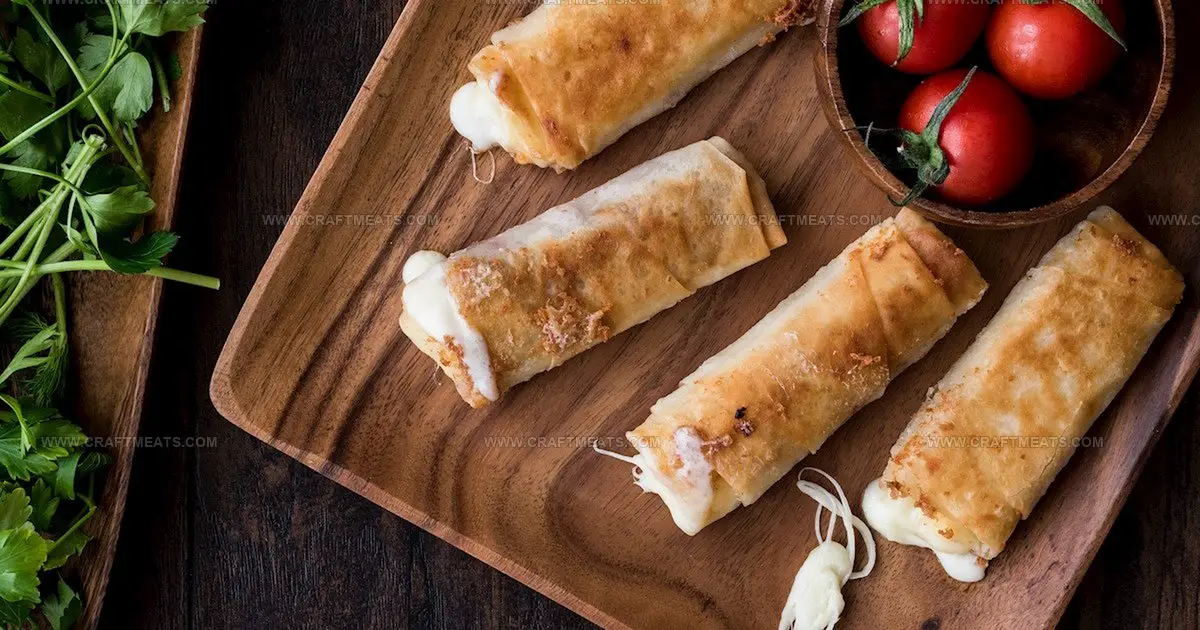
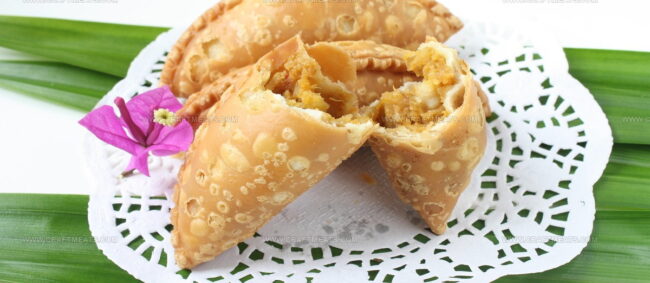
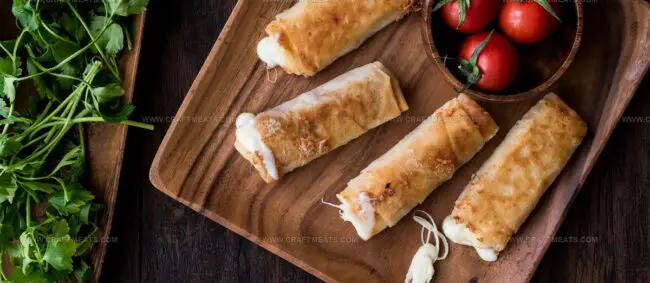

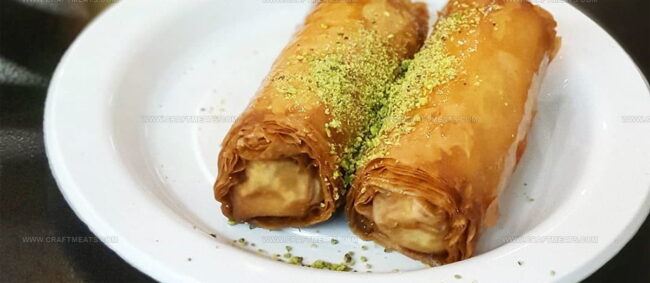
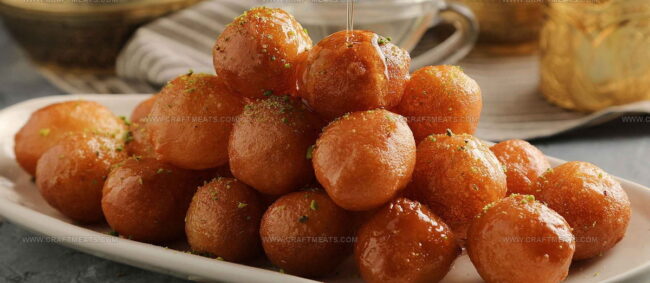
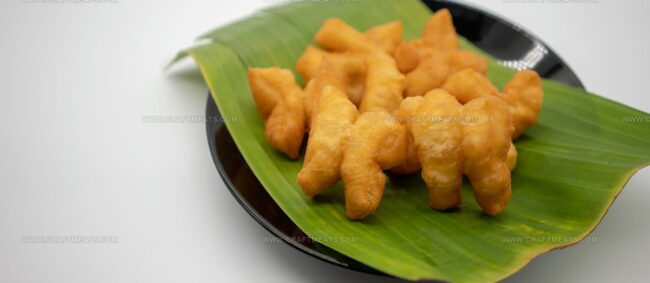
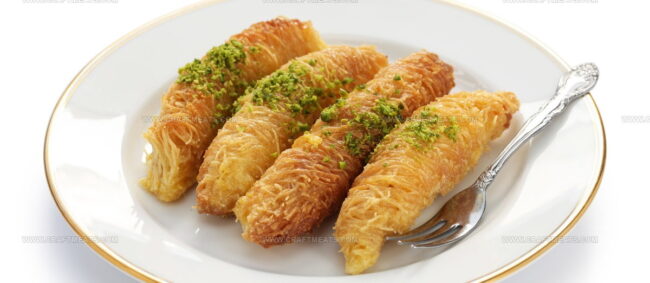
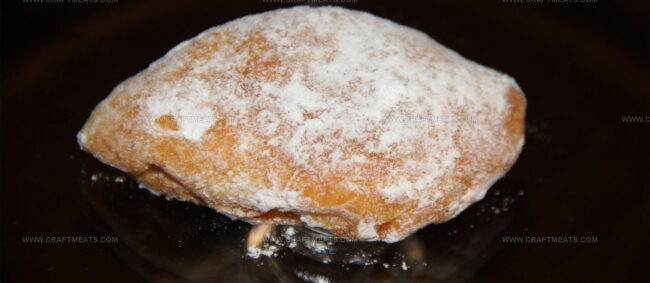
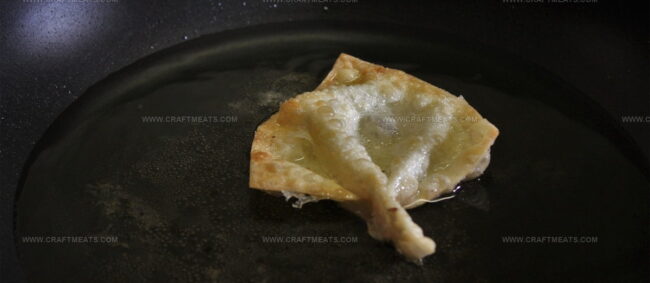
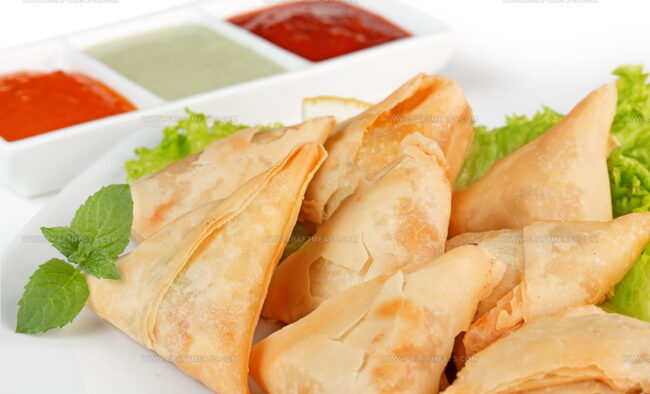
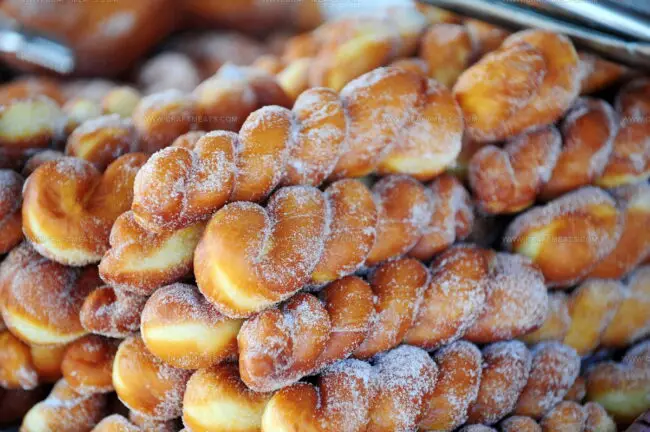


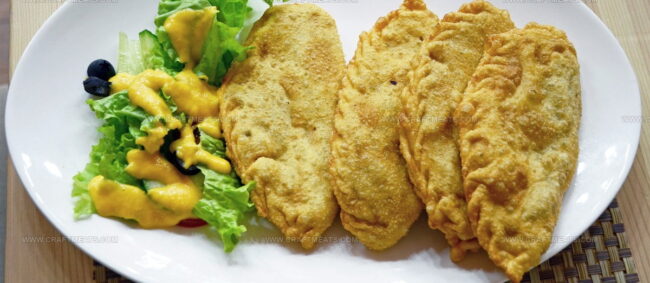


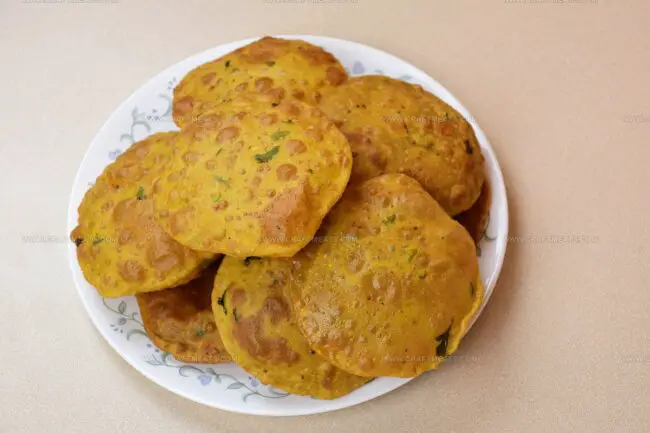
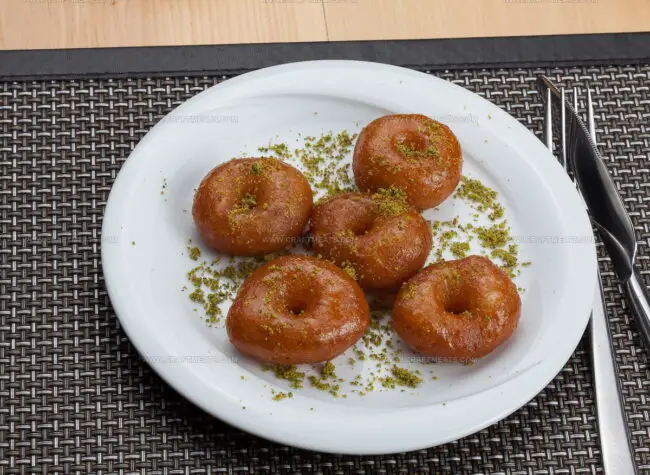

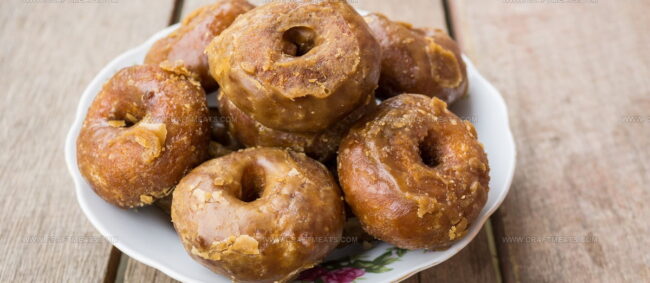
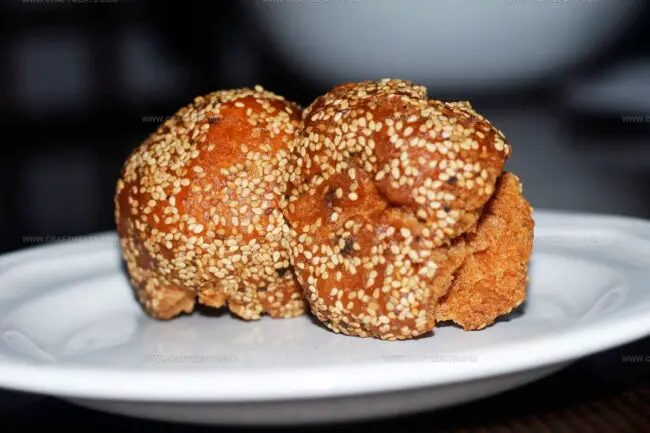
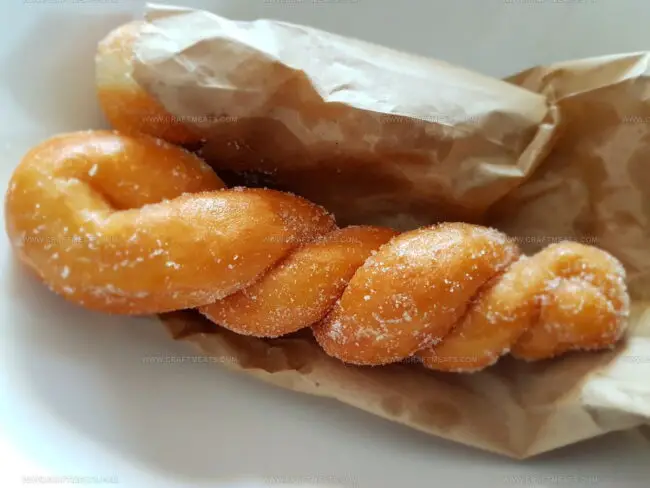

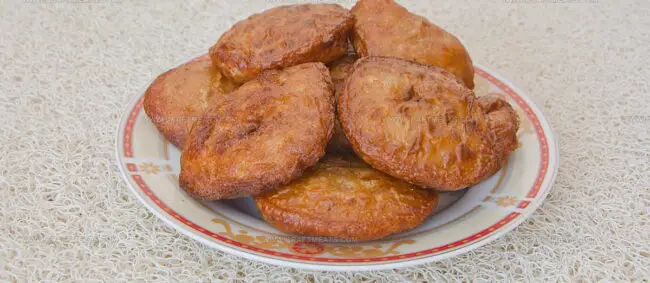
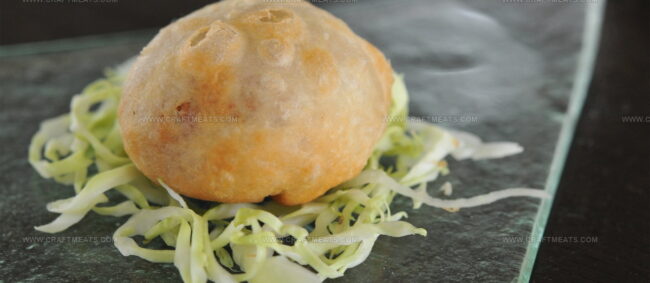
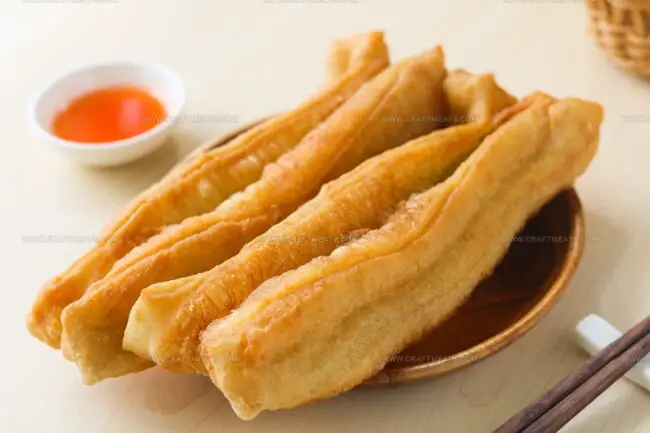
Isabella Rossi
Founder & Culinary Content Creator
Expertise
Recipe Development, Traditional Irish and European Cuisines, Food Styling and Photography, Culinary Education
Education
Dublin Institute of Technology (DIT) – School of Culinary Arts and Food Technology
Ballymaloe Cookery School
Liam is the voice behind many of Craft Meats’ most flavorful features. With roots in Dublin’s smoky barbecue scene and a culinary degree from the Dublin Institute of Technology, he brings time-tested cooking techniques to life.
His training at Ballymaloe Cookery School sharpened his farm-to-table approach, giving him a deep respect for every ingredient he writes about.
He’s not about overcomplicating the process, just helping you cook meat that’s worth talking about. When he’s not writing or grilling, he’s out foraging or nerding out on regional spice blends to add to his next recipe.